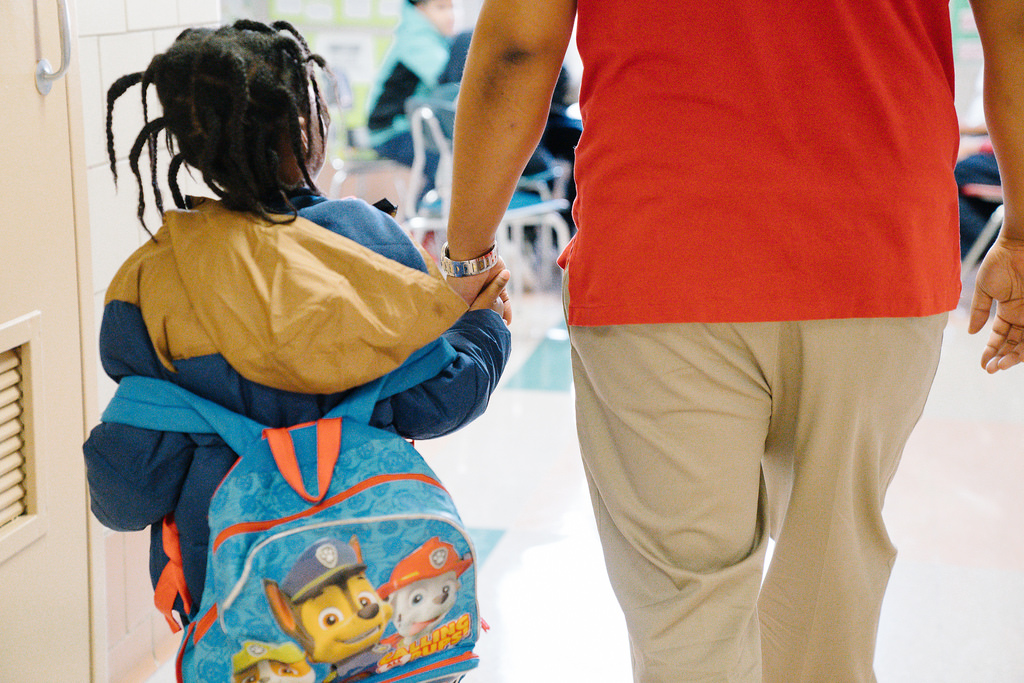Five Minutes a Day

By Gretchen Livesey, Turnaround for Children Partnership Director
Derek*, a third-grader in one of our Washington, D.C. partner schools, really struggled to meet behavioral expectations. Almost every time I visited the school, there was Derek, in the hall, with at least two school leaders attempting to deescalate him as he thrashed about, kicking, hitting and screaming. Even once he had calmed down, he would continue to grimace and refuse to speak, sitting at the precipice of re-escalation.
Derek’s test scores on standardized math and English tests are well above average. When calm, he is talkative and charming, happy especially to connect with adults. On a good day, Derek greets me by name, shakes my hand and always asks how my dog is doing. On these occasions, it is hard to imagine that school can be such a struggle for him.
As I learned from the school’s leaders, Derek’s dad is in and out of the home and his mother struggles to keep the family together. Derek often stays with other family members but gets teased by his cousins. Derek carries these adversities into school with him every day, making him quick to trigger. Even a “hard look” from a peer can spin him out of control. His teacher, Ms. Evans*, mainly sees the escalated Derek, triggering other students, and even the teacher herself. She was at her wits end.
Ms. Evans is a second-year teacher, who was more comfortable delivering academic content than addressing social and emotional learning in her classroom. She was the first to admit that she did not have the tools she needed to support Derek. When he became frustrated and began to lash out, she felt her only option was to call a school leader to remove him from the classroom. This often resulted in him ending up in the hallway lashing out, and always resulted in Derek missing educational experiences.
Because of the level of schoolwide distraction Derek caused and the impact it was having on his own education, Derek’s case was brought to the school’s student support team. After reviewing his case, the team, made up of teacher-leaders, mental health providers and instructional experts, decided to try a student-teacher intervention called “Noncontingent Relationship Building Time.”
I know, it’s quite a mouthful. But what Noncontingent Relationship Building Time really translates to is five minutes of daily, uncompromised student and adult co-play. During this time, outside of regular instruction time, the adult and student engage in an activity selected by the student, where they play together for five minutes. In Derek’s case, he and the teacher play with magnetic building tiles for five minutes. This little time slot happens right before he transitions to specials, such as art or music, and before his teacher starts her prep period. They come together, sit on a beanbag in the hallway and play for five undisturbed minutes.
The key to Noncontingent Relationship Building Time is consistency. Regardless of what might change in his teacher’s schedule, or if Derek struggles during class, the two come together at the same time every day. Thanks to this simple strategy, Derek is better able to self-regulate, because he now has a dependable relationship with a trusted adult at the school. He looks forward to that play time with his teacher and knows, no matter what happens in his life, they will still have those five minutes together.
Never doubt the power of relationships. Having a trusted adult in a child’s life creates a buffer against the adversity that child might be facing. In Derek’s case, five minutes a day make all the difference.
*Names have been changed to protect the student’s and the teacher’s privacy.
To see “Noncontingent Relationship Building Time” in action, watch Cultivating Trust With One-on-One Time, featuring Turnaround partner school KIPP DC Quest Academy.
The video is part of How Learning Happens — a new video series by Edutopia showcasing teaching practices, grounded in the science of learning and development, that educators can use in their classrooms right away.

Share This Story